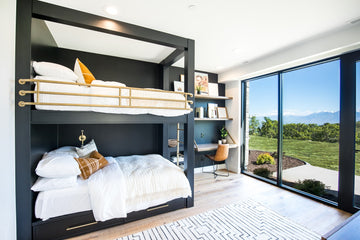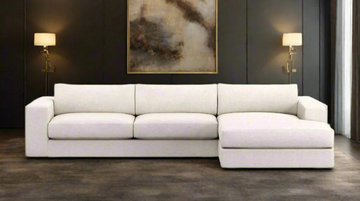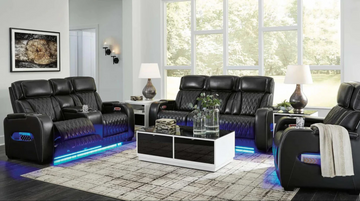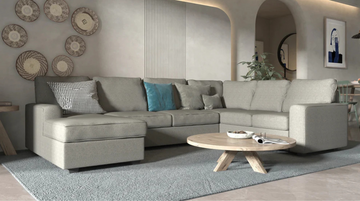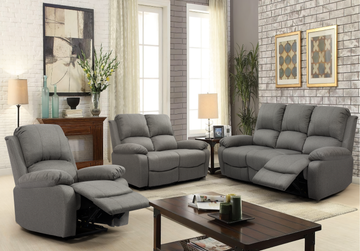Bunk beds are ideal space-saving solutions for when you need to accommodate two kids or adults in a limited space. Their layout makes them feasible for placement in tight spaces, evidenced by their extensive usage in military barracks. However, your bunk beds at home need not be as barebones as the military ones. You can build bunk beds at home with a bit of do-it-yourself (DIY) motivation, and the result might be a perfect bunk bed that is both a great space-saver and practical and looks nice. Today, we’ll look at building bunk beds DIY style.

Before we begin, bunk beds require a 1+1 layout in a shelved manner, which means you have a top bunk and a bottom bunk. This necessitates the use of durable, strong, and robust material, especially for the top bunk, to prevent it from caving and falling on the occupant of the bottom bunk, causing serious injuries.
With that out of the way, let's look at how to build bunk beds the DIY style.
Building bunk beds DIY style
Following these steps and utilizing pre-crafted panels and parts, you can build yourself a bunk bed at home without the hassle of purchasing and spending extra on transportation and fitting. Let’s go through all of the steps required for this.
Start with a design
The first thing in DIY bunk bed building is selecting a design. Since bunk beds are primarily used for kids, you must go with a creative design; remember that practicality is paramount. In this case, both form and function must be followed to a T.
Get your measurements
The right measurements will allow you to purchase the right panels. Everything from the ceiling height to the dimensions of the space in the room needs to be measured, and a preliminary design needs to be drawn up to ensure you know beforehand how the bed will turn out.
Get your panels, and gather your tools.
A Home Depot or any other hardware supply store should carry the panels, connections, and tools you may need. Aside from the panels for the sides of the bed, the connecting materials, and bedpans, the tools you will need are as follows:
- 1) Wood filler
- 2) Wood glue
- 3) Brad nails
- 4) Pocket hole jig
- 5) Stud finder
- 6) Caulk gun
- 7) Wood fill
- 8) Paint sprayer
- 9) Framing nailer
- 10) Saw
- 11) Drill
Erect the walls
Start by nailing and assembling the two walls upon which the ladder to get to the top bunk will rest. This lets you get the technical part out of the way first and include any extras you might have planned for the bed. After the ladder has been attached to the walls, assemble the rest of them and prepare the structure upon which the entire bunk bed will rest.
Start with the top bunk
After the general structure is ready and strong enough to be worked on, the first part to be assembled will be the top bunk. Start by attaching and nailing the floor hoists to the structure and ensure they are rigid and robust enough to support the weight of the floorboard and the kid. Once all the hoists have been added, nail down the flooring. Again, ensure it is rigid and robust. While many people favor a singular chipboard or any other panel, having two smaller ones and meeting them in the middle will help distribute the weight and pressure evenly on the two and could be a better solution to safety for the top bunk.
Now, the bottom bunk
The same measurements and materials for the top bunk will be repeated for the bottom bunk, only this time, the base will need to be rigid and robust enough to support the occupant's weight and sustain the pressure of the entire bed. Start with the floor hoists, and after securing them, attach the bedpan of the bottom bunk and nail it as well. You can leave it be as well since this will make it easy to replace should it break.
Railing
The top bunk is a considerable height and can be dangerous for a sleeping occupant. The railing is a crucial part of the DIY bunk bed build, and while they come as part of the panels for the bunk bed, you can also craft one of your own. Again, nail it down to the open side of the bunk bed, and ensure it is nailed down hard; after the installation, test it with a couple of jerks to the railing and ensure it doesn’t wiggle about. You can make it more rigid by adding railing posts on both ends, but this will depend more on the design you selected.
Add any extras (design-specific)
Before we get to the sanding and painting steps, any extras you might have for the bed, as per the design, will need to be installed. Additions like drawers, hidden compartments, and design cutouts are common in many bunk beds, especially for kids' rooms. After the bed has been assembled and completed, you need to add these before you give it the final touches.
Paint prepping
For paint prepping, you must sand off the splinters, caulk the open sides with the gun and the wood glue, and ensure that any available places are taped off. By sanding off the rougher areas of the build, you will provide an even spray and dispersal of paint, and the build will come along very nicely once an ample amount of paint is applied.
Painting
There are two ways to paint a freshly built DIY bunk bed: unleash your inner Picasso or Rembrandt and take a brush to the structure, or take the quick and efficient way out with a paint gun. We’d recommend the gun; it takes less time, does not make a mess, and, depending on the settings, will apply an even coat of paint on the bed, ensuring ample paint dispersal. The finished result will be a lot better than paint-brushing the whole thing.
Conclusion
Building a bunk bed isn’t difficult; however, DIY can be a little complicated for some people, especially when dealing with wood. Splinters, saw cuts and other issues are prevalent when working with lumber, and for these people, the better option would be to get a pre-built bunk bed that does not require the hard work, planning, and effort of building one. The quality of pre-built bunk beds, aside from their design supremacy and paint, is far better than any DIY bunk bed, and that is because they are built by professionals working with the best designers to create incredible products. While bunk beds DIY is certainly appreciable, the better choice is usually a store-bought one with no compromises on build quality and safety.
North End Furniture: the best bunk beds
For the best bunk beds boasting both form and function, North End Furniture is your answer. Incredible designs meet robust and sturdy construction for bunk beds that elevate the room and its look with their presence, further enhanced by premium paint options and finishes. For North End Furniture, customer satisfaction is paramount, and each design is geared towards maximum usability and safety. The occupant of the top bunk is our focal point for safety, translating into our designs that incorporate both function and style. North End Furniture: your solution for the best bunk beds.

